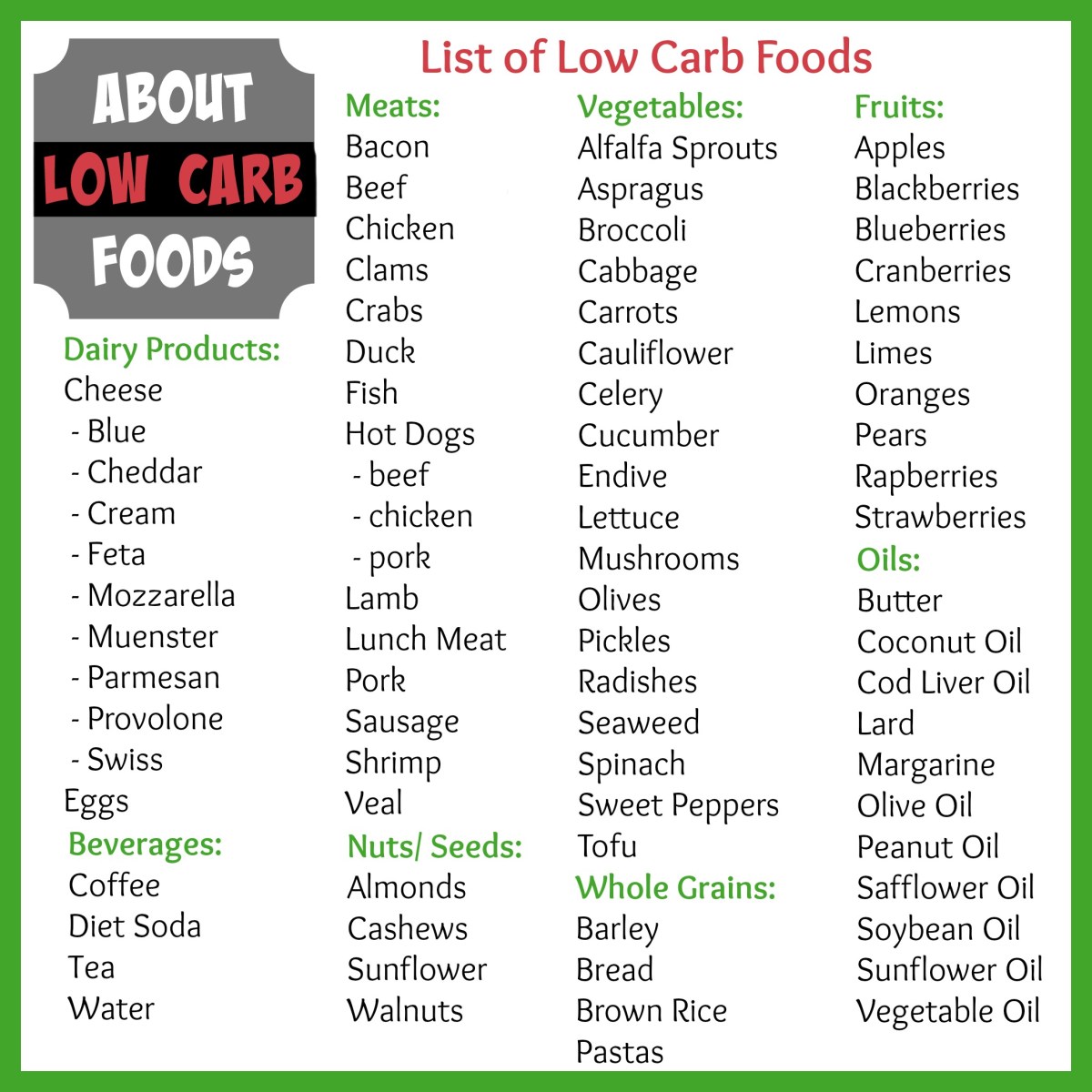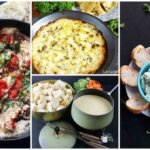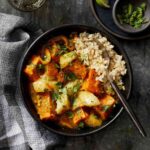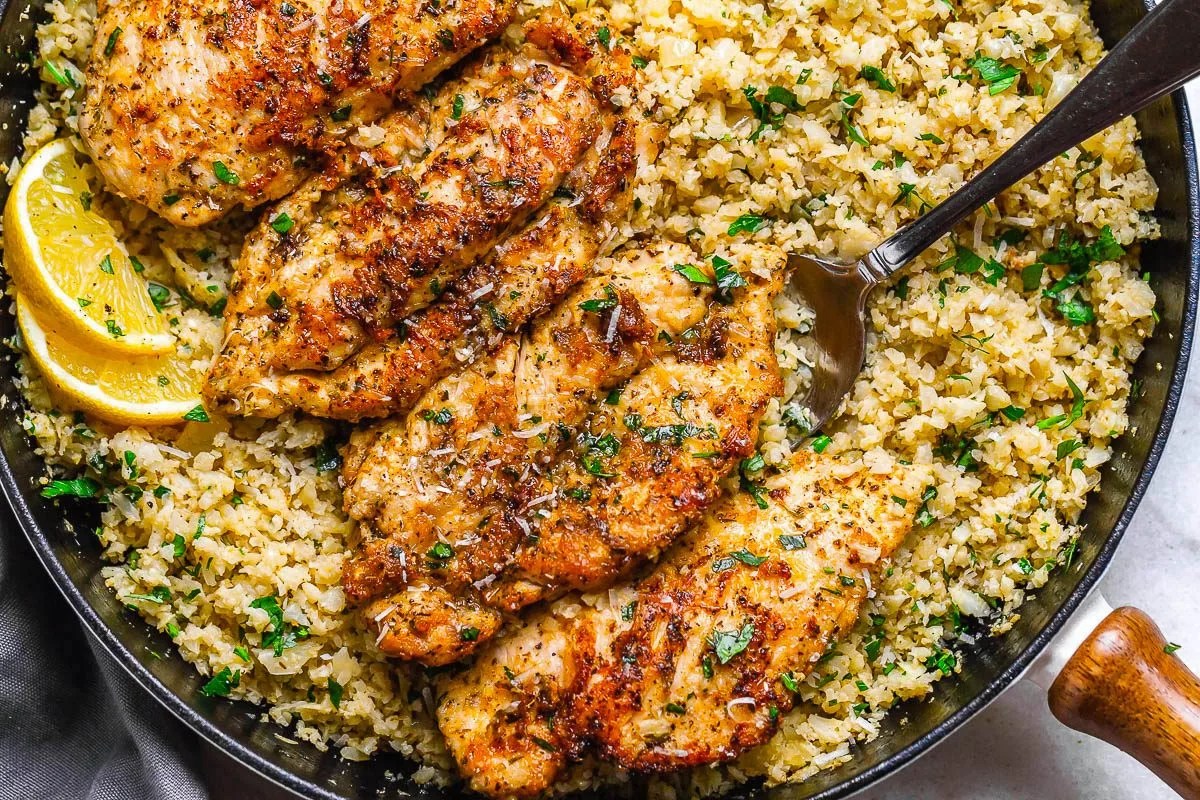Embark on a culinary journey to a healthier you with our guide to Low-Carb Recipes for Weight Loss Success. Imagine vibrant plates bursting with flavor, textures that tantalize, and aromas that awaken your senses – all while effortlessly shedding those extra pounds. We’ll explore diverse low-carb approaches, unveiling the secrets to sustainable weight loss through delicious, satisfying meals. Discover essential ingredients, simple substitutions, and quick recipes perfect for even the busiest lifestyles. Prepare to transform your relationship with food and unlock your body’s full potential.
This comprehensive guide delves into the specifics of three popular low-carb diets – keto, Atkins, and South Beach – comparing their macronutrient ratios, allowed foods, and potential benefits and drawbacks. We’ll equip you with a practical weekly meal plan, a treasure trove of low-carb ingredient substitutions, and a collection of quick, easy, and delectable recipes for breakfast, lunch, dinner, snacks, and even desserts. Prepare to redefine your understanding of healthy eating and achieve your weight loss goals with vibrant, satisfying meals.
Popular Low-Carb Diet Plans
Embarking on a weight-loss journey often involves exploring various dietary approaches. Low-carb diets, characterized by a significant reduction in carbohydrate intake, have gained considerable popularity due to their potential for effective weight management. This section delves into three prominent low-carb diet plans: ketogenic, Atkins, and South Beach, comparing their approaches and highlighting their potential benefits and drawbacks.
Comparison of Ketogenic, Atkins, and South Beach Diets
Understanding the nuances of different low-carb diets is crucial for selecting the most suitable approach for individual needs and preferences. The following table provides a concise comparison of the ketogenic, Atkins, and South Beach diets, focusing on their macronutrient ratios, allowed foods, and restrictions.
| Diet Name | Macronutrient Ratio (Carbs/Protein/Fat) | Allowed Foods | Restrictions |
|---|---|---|---|
| Ketogenic | 5-10%/20-30%/70-75% | High-fat foods like avocados, nuts, olive oil; moderate protein sources such as meat, fish, eggs; very low-carb vegetables like leafy greens. | Most fruits, grains, legumes, starchy vegetables, sugary drinks, processed foods. Strict adherence to carbohydrate limits is essential for ketosis. |
| Atkins | Variable, starting very low-carb and gradually increasing | Meat, fish, poultry, eggs, cheese, nuts, seeds, low-carb vegetables. | Grains, sugary foods, most fruits, high-carb vegetables initially. The diet progresses through phases, gradually reintroducing some carbohydrates. |
| South Beach | Moderate protein, moderate fat, low-carb | Lean protein, healthy fats, non-starchy vegetables, some fruits (limited). | Sugary foods, processed foods, unhealthy fats, refined grains. Focuses on the quality of carbohydrates consumed, emphasizing “good” carbs over “bad” carbs. |
Benefits and Drawbacks of Low-Carb Diets
Each diet plan presents unique advantages and disadvantages. The ketogenic diet, for example, can lead to rapid initial weight loss due to its ability to induce ketosis, a metabolic state where the body burns fat for energy. However, the very restrictive nature of the keto diet can make it difficult to sustain long-term, and some individuals may experience side effects like “keto flu” (headaches, fatigue, nausea) during the initial adaptation period. The Atkins diet, with its phased approach, offers more flexibility, but it can also lead to nutrient deficiencies if not carefully planned. The South Beach diet, by focusing on healthy fats and lean protein, promotes a more balanced approach and is generally considered easier to maintain in the long run, although weight loss may be slower than with the other two.
Sample Weekly Ketogenic Meal Plan
This sample meal plan illustrates a potential week of eating on a ketogenic diet. Remember that individual caloric needs vary, and this plan should be adjusted according to personal requirements and preferences. Consult a healthcare professional or registered dietitian for personalized dietary advice.
| Day | Breakfast | Lunch | Dinner |
|---|---|---|---|
| Monday | Scrambled eggs with spinach and cheese | Chicken salad with avocado and mixed greens | Salmon with roasted asparagus and butter |
| Tuesday | Keto smoothie (unsweetened almond milk, protein powder, chia seeds, berries) | Leftover salmon and asparagus | Steak with cauliflower mash |
| Wednesday | Coconut yogurt with berries and nuts | Tuna salad with celery and mayonnaise (olive oil based) | Pork chops with green beans and a side salad |
| Thursday | Omelet with mushrooms and cheese | Leftover pork chops and green beans | Chicken stir-fry with low-carb vegetables and coconut aminos |
| Friday | Bulletproof coffee (coffee with butter and MCT oil) | Salad with grilled chicken and a vinaigrette dressing | Shrimp scampi with zucchini noodles |
| Saturday | Bacon and eggs | Leftover shrimp scampi | Steak with broccoli and cheese |
| Sunday | Chia seed pudding with coconut milk and berries | Chicken Caesar salad (using olive oil-based dressing) | Roast chicken with Brussels sprouts and olive oil |
Quick & Easy Low-Carb Recipes
Navigating a low-carb lifestyle doesn’t have to mean sacrificing delicious and convenient meals. Even with a busy schedule, it’s entirely possible to enjoy flavorful, satisfying low-carb dishes prepared in under 30 minutes. These recipes prioritize simplicity and speed, making them ideal for individuals with limited time but a desire for healthy eating.
Quick & Easy Low-Carb Recipe Options
The following recipes offer a variety of flavors and textures, demonstrating that quick doesn’t have to mean boring. Each recipe is designed to be easily adaptable to different dietary needs and preferences.
| Recipe Name | Preparation Time | Ingredients | Instructions |
|---|---|---|---|
| One-Pan Lemon Herb Roasted Chicken and Veggies | 25 minutes | 1 lb boneless, skinless chicken breasts, cut into 1-inch pieces; 1 cup broccoli florets; 1 cup Brussels sprouts, halved; 1 tbsp olive oil; 1 lemon, juiced and zested; 1 tsp dried oregano; 1 tsp dried thyme; Salt and pepper to taste | Preheat oven to 400°F (200°C). Toss chicken and vegetables with olive oil, lemon juice, zest, oregano, thyme, salt, and pepper. Spread on a baking sheet and roast for 20-25 minutes, or until chicken is cooked through and vegetables are tender-crisp. The final dish is a vibrant, colorful mix of tender chicken and perfectly roasted vegetables, infused with bright lemon and herbaceous notes. The simplicity of the one-pan method minimizes cleanup. |
| Shrimp Scampi with Zucchini Noodles | 15 minutes | 1 lb shrimp, peeled and deveined; 2 medium zucchini, spiralized or julienned; 2 tbsp butter; 2 cloves garlic, minced; 1/4 cup dry white wine (optional); 2 tbsp lemon juice; 1 tbsp chopped fresh parsley; Salt and pepper to taste | Melt butter in a large skillet over medium heat. Add garlic and cook for 1 minute, until fragrant. Add shrimp and cook for 2-3 minutes per side, until pink and cooked through. Stir in white wine (if using), lemon juice, and parsley. Season with salt and pepper. Toss with zucchini noodles and serve immediately. This dish offers a light yet satisfying meal, with the delicate sweetness of shrimp complemented by the subtle garlic and lemon flavors. The zucchini noodles provide a healthy, low-carb alternative to traditional pasta. |
| Quick Tuna Salad Lettuce Wraps | 10 minutes | 2 cans (5 oz each) tuna in water, drained; 1/4 cup mayonnaise (full-fat preferred); 1/4 cup chopped celery; 1 tbsp chopped red onion; 1 tbsp lemon juice; Salt and pepper to taste; Large lettuce leaves (e.g., romaine, butter lettuce) | In a medium bowl, combine tuna, mayonnaise, celery, red onion, and lemon juice. Season with salt and pepper. Mix well. Spoon tuna salad into lettuce leaves and serve immediately. This recipe is a refreshing and incredibly fast option. The crisp lettuce adds a satisfying crunch, while the tuna salad provides a protein-packed filling. It’s easily customizable with additions like chopped pickles or hard-boiled eggs. |
Adapting Recipes for Dietary Needs
These recipes can be easily adapted to accommodate various dietary needs. For example, the One-Pan Lemon Herb Roasted Chicken and Veggies can be made vegetarian by substituting the chicken with firm tofu, seasoned similarly. The Shrimp Scampi can be made vegan by using vegan butter and omitting the white wine. For those avoiding dairy, the Tuna Salad Lettuce Wraps can be prepared using a dairy-free mayonnaise alternative. Creative substitutions can ensure everyone can enjoy delicious and healthy low-carb meals.
Delicious Low-Carb Dinner Recipes

These three diverse and flavorful low-carb dinner recipes are designed to satisfy your hunger while supporting your weight loss goals. Each recipe is packed with nutrients and provides a delicious alternative to high-carbohydrate meals. They are relatively quick to prepare, making them perfect for busy weeknights.
Garlic Butter Shrimp Scampi with Zucchini Noodles
This elegant dish replaces traditional pasta with zucchini noodles for a significantly lower-carb option. The shrimp are succulent and infused with the rich flavor of garlic butter, creating a satisfying and light meal.
- Ingredients: 1 pound large shrimp (peeled and deveined), 2 medium zucchini (spiralized into noodles), 4 tablespoons butter, 4 cloves garlic (minced), 1/4 cup dry white wine, 2 tablespoons lemon juice, 1/4 cup chopped fresh parsley, salt and pepper to taste.
- Instructions: Melt butter in a large skillet over medium heat. Add garlic and cook until fragrant (about 30 seconds). Add shrimp and cook until pink and opaque (about 2-3 minutes per side). Pour in white wine and lemon juice, bring to a simmer, and cook for 1 minute. Stir in zucchini noodles and parsley. Season with salt and pepper to taste. Cook until zucchini noodles are tender-crisp (about 2-3 minutes).
- Visual Description: The finished dish is a vibrant green and pink, with the bright green zucchini noodles contrasting beautifully with the pink shrimp. The sauce is a glistening, buttery yellow, coating the noodles and shrimp. The aroma is rich and savory, with a strong garlic and lemon scent.
- Nutritional Benefits: This recipe is high in protein from the shrimp, providing satiety and supporting muscle growth. Zucchini is low in calories and provides essential vitamins and minerals. The healthy fats from butter contribute to hormone production and satiety.
Sheet Pan Chicken Fajitas with Bell Peppers and Onions
This recipe simplifies the fajita process by using a sheet pan for easy cleanup and even cooking. The chicken and vegetables are seasoned with a zesty blend of spices, creating a flavorful and satisfying meal.
- Ingredients: 1.5 pounds boneless, skinless chicken breasts (sliced into strips), 1 large green bell pepper (sliced), 1 large red bell pepper (sliced), 1 large onion (sliced), 2 tablespoons olive oil, 1 tablespoon chili powder, 1 teaspoon cumin, 1/2 teaspoon paprika, 1/4 teaspoon garlic powder, salt and pepper to taste.
- Instructions: Preheat oven to 400°F (200°C). Toss chicken and vegetables with olive oil and spices. Spread in a single layer on a large baking sheet. Bake for 20-25 minutes, or until chicken is cooked through and vegetables are tender.
- Visual Description: The chicken is golden brown and slightly crispy at the edges, while the bell peppers and onions are tender and slightly caramelized. The colors are vibrant – green, red, and yellow from the peppers and onions, with the golden brown chicken providing a beautiful contrast. The aroma is spicy and savory, with a hint of sweetness from the peppers.
- Nutritional Benefits: This recipe is a great source of lean protein from the chicken, which is crucial for weight loss and muscle maintenance. Bell peppers and onions are low in carbohydrates and rich in vitamins and antioxidants.
Baked Salmon with Asparagus and Lemon
This simple yet elegant recipe highlights the flavor of baked salmon, complemented by the fresh taste of asparagus and lemon. It’s a quick and healthy option packed with nutrients.
- Ingredients: 2 salmon fillets (6-8 ounces each), 1 bunch asparagus (trimmed), 1 lemon (sliced), 2 tablespoons olive oil, salt and pepper to taste.
- Instructions: Preheat oven to 400°F (200°C). Place salmon fillets and asparagus on a baking sheet lined with parchment paper. Drizzle with olive oil and season with salt and pepper. Top each salmon fillet with lemon slices. Bake for 12-15 minutes, or until salmon is cooked through and asparagus is tender.
- Visual Description: The salmon is flaky and moist, with a beautiful pink color. The asparagus is bright green and tender. The lemon slices add a touch of bright yellow, creating a visually appealing dish. The aroma is fresh and clean, with a subtle hint of lemon.
- Nutritional Benefits: Salmon is an excellent source of omega-3 fatty acids, which are beneficial for heart health and brain function. It’s also high in protein. Asparagus is a low-calorie vegetable that’s rich in vitamins and fiber.
Low-Carb Snack & Dessert Ideas
Satisfying sweet cravings while staying committed to a low-carb diet can be challenging. However, with a little creativity, delicious and guilt-free snacks and desserts are entirely achievable. The following recipes offer a variety of flavors and textures, ensuring that your low-carb journey remains enjoyable and sustainable. These options prioritize healthy fats and proteins, keeping you feeling full and energized, while minimizing sugar intake.
Five Low-Carb Snack and Dessert Recipes
The following recipes provide a diverse range of low-carb options, each designed to satisfy different cravings while aligning with weight loss goals. These recipes are easily adaptable to personal preferences and dietary needs.
| Snack/Dessert | Ingredients | Nutritional Information (per serving, approximate) | Preparation |
|---|---|---|---|
| Avocado Chocolate Mousse | 1 ripe avocado, ½ cup unsweetened cocoa powder, ¼ cup erythritol or stevia, 2 tbsp heavy cream, 1 tsp vanilla extract, pinch of salt | Calories: ~200, Fat: ~18g, Protein: ~4g, Net Carbs: ~5g | Blend all ingredients until smooth and creamy. Chill for at least 30 minutes before serving. The mousse will have a rich, dark brown color and a luxuriously smooth, almost velvety texture. Garnish with a few raspberries for a pop of color and tartness. |
| Coconut Flour Pancakes | 1 cup coconut flour, 4 eggs, 2 tbsp unsweetened almond milk, 1 tbsp melted coconut oil, ½ tsp baking powder, ¼ tsp salt, sweetener to taste (e.g., erythritol or stevia) | Calories: ~150 per pancake, Fat: ~10g, Protein: ~5g, Net Carbs: ~5g per pancake | Whisk together all ingredients until a smooth batter forms. Cook on a lightly oiled griddle over medium heat until golden brown on both sides. The pancakes will have a slightly dense, cake-like texture and a delicate coconut flavor. Serve with sugar-free syrup or berries. |
| Chia Seed Pudding | ¼ cup chia seeds, 1 cup unsweetened almond milk, 1 tbsp erythritol or stevia, 1 tsp vanilla extract, ½ tsp cinnamon | Calories: ~180, Fat: ~12g, Protein: ~6g, Net Carbs: ~8g | Combine all ingredients in a jar or container. Stir well and refrigerate for at least 4 hours, or preferably overnight. The pudding will have a creamy, slightly gelatinous texture with a speckled appearance from the chia seeds. The warm cinnamon scent combines with the sweet almond milk for a comforting aroma. |
| Peanut Butter Celery Sticks | 2 stalks celery, 2 tbsp natural peanut butter (no added sugar) | Calories: ~100, Fat: ~8g, Protein: ~4g, Net Carbs: ~3g | Wash and cut celery into sticks. Spread peanut butter evenly onto each stick. The vibrant green celery provides a crisp contrast to the creamy, nutty peanut butter. |
| Macadamia Nut Cookies | 1 cup macadamia nuts, 2 eggs, 2 tbsp almond flour, 2 tbsp erythritol or stevia, ½ tsp vanilla extract | Calories: ~120 per cookie, Fat: ~10g, Protein: ~3g, Net Carbs: ~4g per cookie | Pulse macadamia nuts in a food processor until finely chopped but not completely pulverized. Mix with remaining ingredients. Drop by rounded tablespoons onto a baking sheet. Bake at 350°F (175°C) for 10-12 minutes, until lightly golden. The cookies will have a slightly chewy texture with a rich, nutty flavor and a satisfying crunch. |
Nutritional Comparison of Low-Carb Snacks and Desserts
The table above provides an approximate nutritional breakdown for each recipe. It is important to note that these values can vary slightly depending on the specific ingredients used. Generally, these snacks and desserts are lower in carbohydrates and higher in healthy fats and protein compared to traditional high-carb counterparts. The high fat content contributes to satiety, helping to manage hunger and prevent overeating. The inclusion of ingredients like chia seeds and macadamia nuts provides additional nutritional benefits, including fiber and essential fatty acids.
Achieving lasting weight loss doesn’t require sacrifice; it’s about embracing a lifestyle change that nourishes your body and delights your taste buds. This journey into the world of low-carb cooking has equipped you with the knowledge and recipes to make that change a reality. Visualize yourself effortlessly preparing delicious, low-carb meals, feeling energized and confident in your progress. Remember, the path to success is paved with mindful choices and the joy of culinary exploration. Embrace the possibilities, and savor every delicious step towards a healthier, happier you.
FAQ Compilation
What are some common side effects of starting a low-carb diet?
Common side effects, often referred to as the “keto flu,” can include headaches, fatigue, constipation, and dizziness. These usually subside within a few days as your body adjusts.
How much water should I drink on a low-carb diet?
Staying well-hydrated is crucial. Aim for at least eight glasses of water per day, more if you’re exercising.
Can I still eat fruit on a low-carb diet?
Yes, but in moderation. Berries are generally lower in carbs than other fruits.
Is it okay to have cheat days on a low-carb diet?
Occasional indulgences are possible, but sticking to the plan consistently yields the best results. Plan your treats strategically.
How can I manage cravings on a low-carb diet?
Focus on nutrient-dense, satisfying foods. Increase your protein and healthy fat intake to keep you full and reduce cravings.


